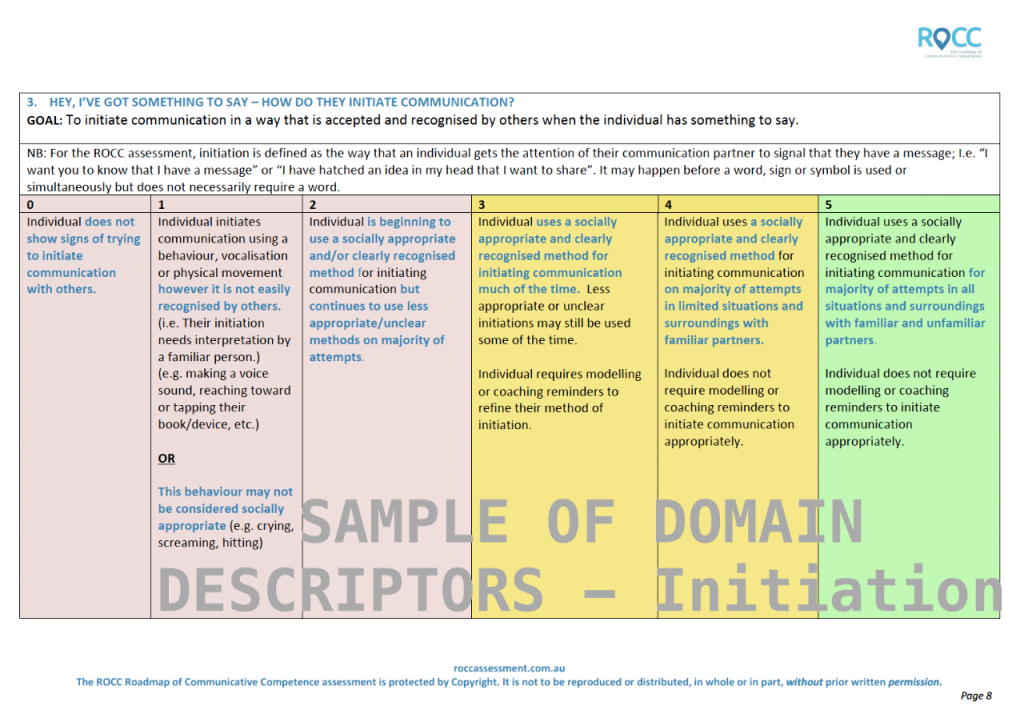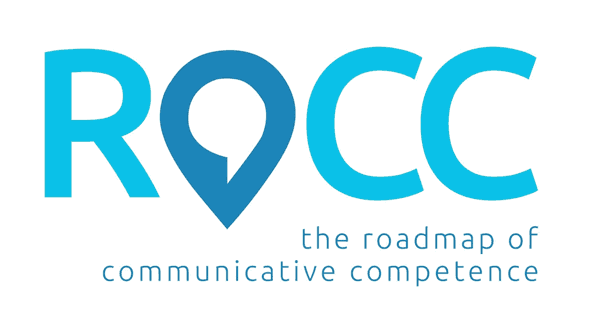
Within the ROCC there are 10 domains, with each of these 10 domains including detailed descriptors covering from levels 0 through to 5. These descriptors arose through a combination of clinical experience and observation of key milestones in each domain, and the research evidence base around autonomous and competent communication. This was then cross-checked against key teachings and frameworks such as:
- PODD Communication Book teaching and learning strategies by Gayle Porter,
- Janice Light’s Competencies (Light, 1989),
- The Participation Model (Beukelman & Mirenda, 1988),
- Social Networks (Blackstone & Hunt Berg, 2003),
- and other general information around pragmatic development, language complexity and strategic competence.
The descriptors were then refined and reviewed over our 18 month trial of the ROCC in 8 Australian schools, to ensure that a range of communication modes and levels were included.
The descriptors for each level are broad and not detailed. They are intended as a guide to performance criteria at each level, rather than an evaluative scoring system. Level changes occur at key milestones rather than graded progression across levels. For example, in domain 6, the progression through levels of language complexity is similar to the language level progression within the PODD communication books, moving from emergent, to single words and beginning combinations, key-word messages, then up to expanded key word and complex syntax. Similarly, domain 7 begins with earlier developing pragmatic functions. Then the participant progresses to the higher levels as they begin using the later developing functions.
It is important to note that the ROCC is not intended to be a stand alone assessment tool – it is intended to provide a bigger picture process to see change over time. Review and discussion of a participant’s ROCC profile may lead to consideration of a more detailed assessment within a target domain in order to better inform ongoing support or intervention in that specific area.
